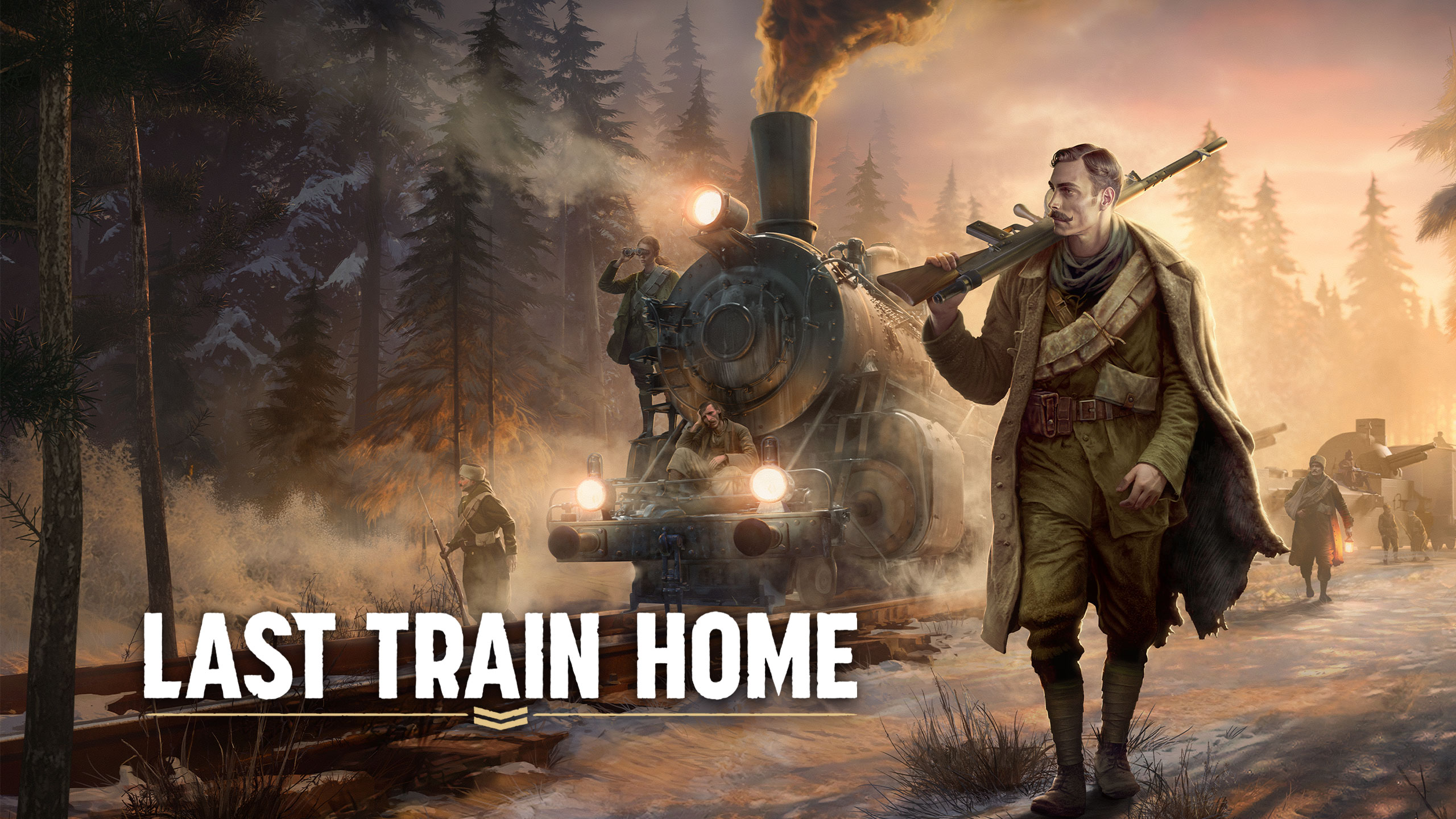After finishing my preview of Last Train Home back in September, I was left inspired and eager to travel further with my vagabond legion. I queried how the game would continue to develop its ideas and keep things fresh over a lengthy campaign. But most of all, I wanted to sample more of its authentic and true-to-life representation of post-World War One survival.
Now, having spent many more hours journeying across the dangerous, war-ravaged land of 1910s Soviet Russia, I can safely say it’s lived up to my hopes. A brutal, challenging campaign is combined with emotionally heart-wrenching decision-making and deep tactical dilemmas to overcome. The journey to Vladivostok is arduous, and Last Train Home captures every compelling, nightmarish moment of that.
As such, come join me as we explore what makes the elongated daily commute home so fulfilling yet harrowing for this Czechoslovakian Legion.
Russian To Get Home
Last Train Home’s story is delivered via two different means. The first is cutscenes, dialogue and live-action sequences. For the most part, these are excellent, providing strong exposition for both the time period and the brutal conditions the Legion faced attempting to escape the Reds’ and Whites’ civil war in Russia.
The attention to a truly authentic experience is remarkable. I played with native voice acting for every faction, which lends a significant immersion to the overall narrative. Soldiers exclaim in their native tongues, the diary-form delivery of the tale is well-told and the live-action sequences are welcome additions as opposed to uncanny distractions.
So what’s the second means of storytelling? The Legion themselves – more specifically, the individual stories you create with your band of far-from-home soldiers. Each has their own personality, traits and resilience towards the peril they face. You’ll despair when they become injured or traumatised, feel guilt when you’re forced to halve their rations, and rejoice when you can treat them to a morale-boosting round at a pub.
Much like other strategy titles such as XCOM, the real story is the one you craft with the lives you’re in charge of. Make a poor decision, you’ll be devastated as your most loyal Legionnaire is wiped out by machine gun fire. Units can bicker, joke, disagree, banter and even desert if treated unfavourably. Last Train Home’s greatest success is making you, as the player-commander, feel the intensity of the stakes, with every soldier’s life in your hands.
It’s rare a game can so perfectly meld together its overarching story with the gameplay “feel”, but Last Train Home succeeds wonderfully. By the end, you and your troops will be relieved and exhausted in equal measure. Just make sure you do actually lead them all home.

Last Close Call
How are you tasked with guiding your displaced Legion back to Czechoslovakia you ask? Well, via old-school locomotive, of course. With travel to the west impossible, the Legion must travel east to Vladivostok to escape the perils of the land they’re trapped in. Across the nine chapters, you’ll manage your train’s travels across landscapes, with various landmarks peppering the route.
The train only moves forward, so haphazardly going full-speed ahead will end with you missing important resource locations or points of interest. Everything is marked for you along your route, leaving you with decisions on how to most efficiently reach the end goal. In order to interact with points of interest, you need to deploy squads of your units, requiring resources and stamina.
Here begins the bulk of your strategy decision-making. In order to reach the end, your mobile hotel requires fuel, food, ammunition, metal, wood and herbs. Your recruits need sustenance and more importantly, morale. A forest area may require a survivalist or hunter, while an abandoned village will yield more resources to a burglar or housekeeper.
Time management becomes your greatest ally and enemy, as you deploy squads with the best traits, while also balancing not wearing out your troop’s stamina, leaving them incapacitated and requiring rest. The overworld sections are addictive, as you attempt to gather everything you can (often in vain) and store up enough resources to get your forces through the battles and Siberia’s to come.
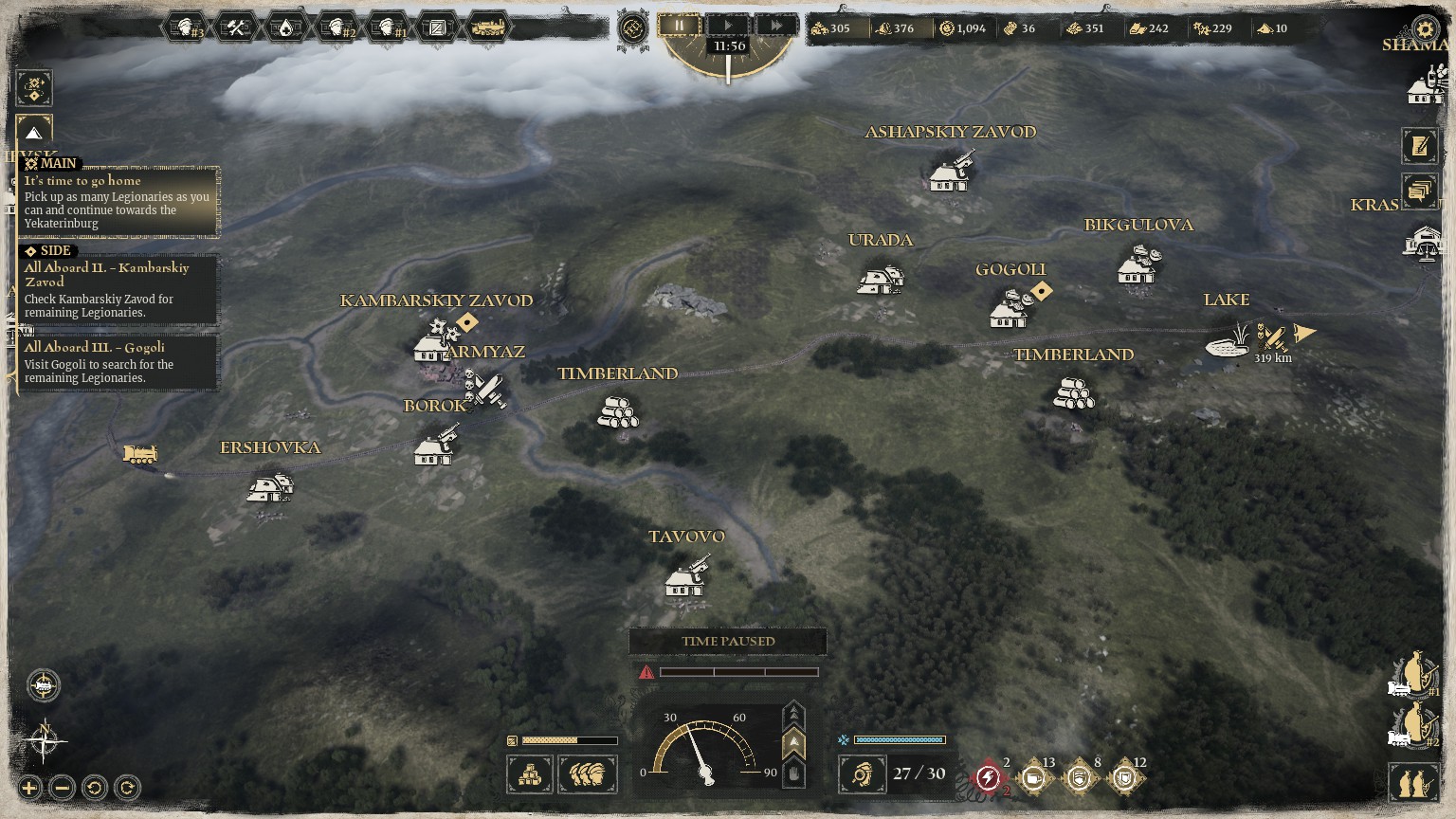
Train To Somewhere
As you might expect, the difficulty of your progression through Russia and the decisions you face along the way become far more arduous. Stop in one spot for too long and the Reds will start sending sorties to attack. Enter Siberia unprepared and you’ll run short of fuel, food or even upgrades to keep your soldiers suitably warm. The intensity ramps up smoothly with your skill level and knowledge, creating a nice gradient of increasing challenge.
There’s a palpable feeling of tension as you attempt to expand your available train space to accommodate more lost souls, only to find you lack the food supplies necessary to keep them all healthy. Make a poor decision early in one chapter and watch it come back to haunt you in a later encounter. Last Train Home is all about consequences, which makes it uniquely tense as a result.
Using the resources you acquire along your routes, you can upgrade the locomotive for capacity, temperature, efficiency, weapons effectiveness and benefits for your squads. There’s a lot here for you to sink into, though I found that temperature and storage were far more important, leading to me skipping ones for say, durability.
Purchasing or finding new train cars provides new opportunities and roles for your units. A hospital car allows doctors to treat your injured units, while an artillery car provides a massive weapon that can shift a tough battle in your favour. Navigating all of these decisions and making the “correct” choices is hugely engaging. Though, it’s equally devastating when poor preparation derails you later in a campaign.
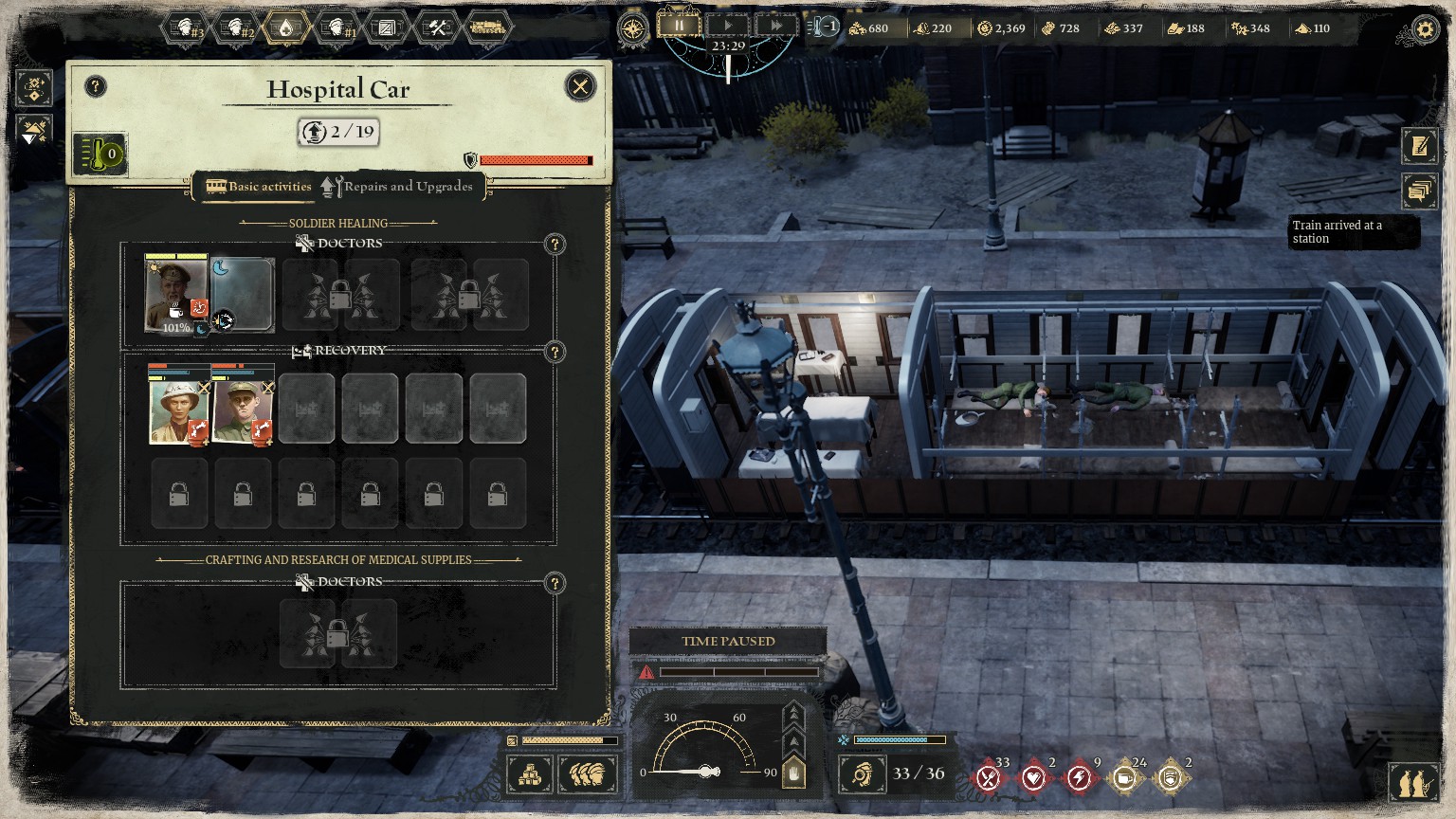
Disembark For Combat
Each chapter has a smattering of both main and side missions you’ll either complete or avoid altogether. That’s right, you can entirely skip story-significant missions. You might think that’s madness, but that’s until you reach said point with next to no ammunition reserves and few available soldiers to complete the daring raid. Again, there are consequences to proceeding or backing out, with crosses to bear in both scenarios.
Once on the ground, Last Train Home becomes a real-time strategy title in full force. You command your units as individuals or as squads. The maps can vary from relatively mid-sized to large, again developing in difficulty significantly. Early missions may only have small patrols or basic infantry to overcome, while later engagements will have armoured vehicles, mortars and massive garrisons to contend with.
Understanding your units and their abilities is paramount to success. One wrong move can spell the end of an entire unit if you’re not careful. Stealth is prioritised and is surprisingly viable for most missions. Sometimes, however, it’s strangely better to just line up your squad in cover and go to town. It can occasionally feel at odds with the atmosphere and dialogue of keeping your heads down.
For example, enemy AI and detection can go wonky, requiring you just wipe them out with brawn instead of brains. It can be frustrating to go stealth only for the systems to just not work – why does my bayonet charge always fail against a soldier mounted on a turret when the soldier is exposed? The mechanics are deep and tactically enticing, but unless you plan on save-scumming a lot, there’ll be issues you can’t always account for.
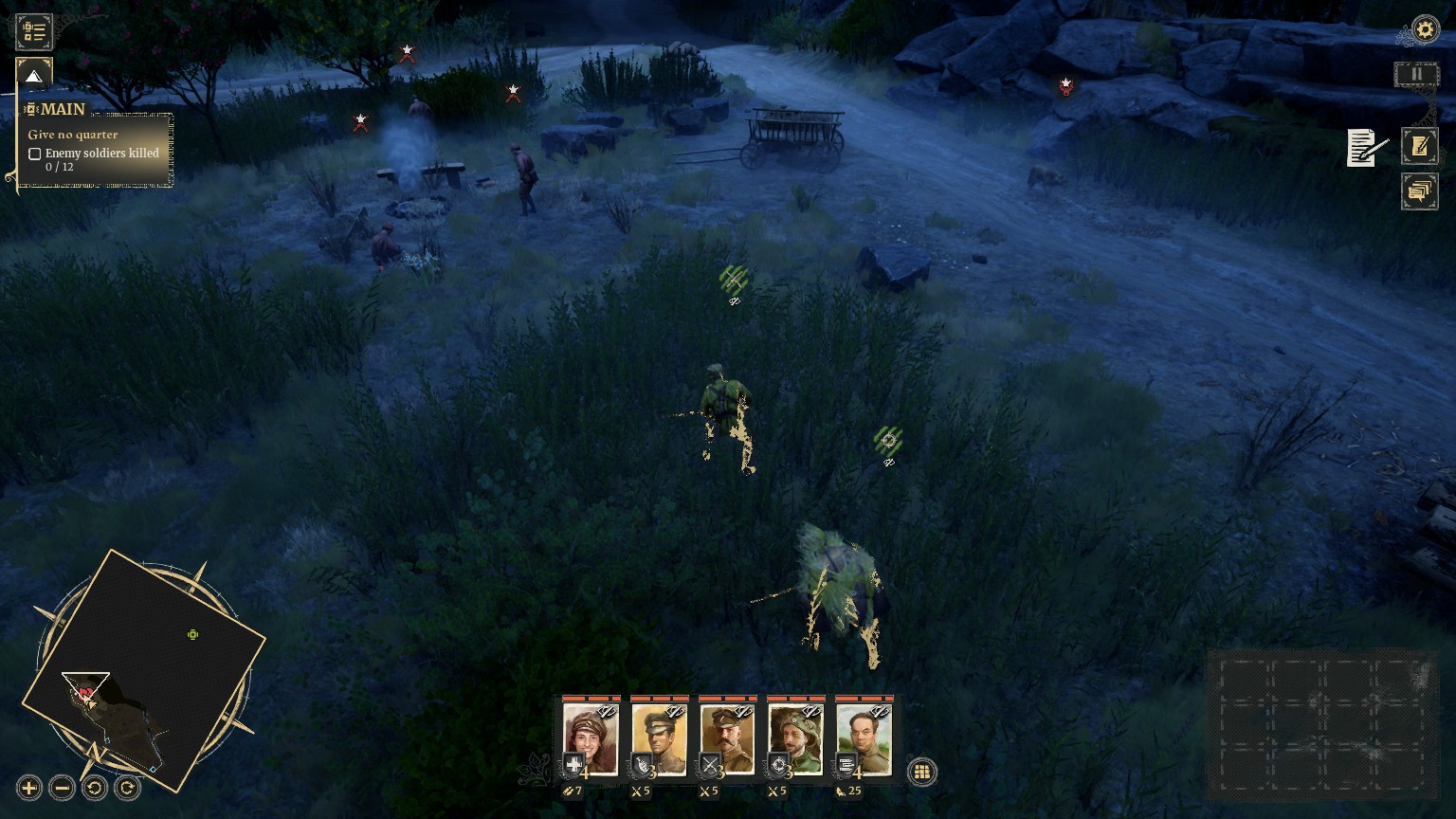
Seize The Means Of Traversal
Thankfully, when the systems in Last Train Home are working, they’re superb and utterly engrossing. Managing your units into cover, hiding them in tall grass, securing lookout points and creating the perfect kill box is fascinatingly compelling. One wrong move into a rogue soldier’s line of sight will trigger a rather unfavourable shooting spree and knowing that your units can be felled so quickly naturally raises the stakes.
While there are only so many ways the game can create unique objectives that aren’t just “kill this person, secure this point”, it never really became stale. I preferred the train management gameplay over the tactical combat, but that’s more due to the fact that it’s so easy to screw up in a mission and have to reload, sitting through a rather lengthy loading screen.
Plus, when you finally nail the stealth mechanics and come through a big mission having expended no ammo, gathering a load of resources and slipping away undetected, there’s little as satisfying. Unit pathfinding can be problematic, which is frustrating when it leads to an unintended firefight. Soldiers also have a tendency, even in stealth, to wander straight into an enemy’s line of sight, which is aggravating.
Even so, the fact Last Train Home accounts for many options allows for so many different avenues of playstyle and welcomes caution (for the most part) so willingly, makes it an enticing prospect for strategy fans. It’s XCOM meets Company of Heroes, both of which are hugely complimentary comparisons.
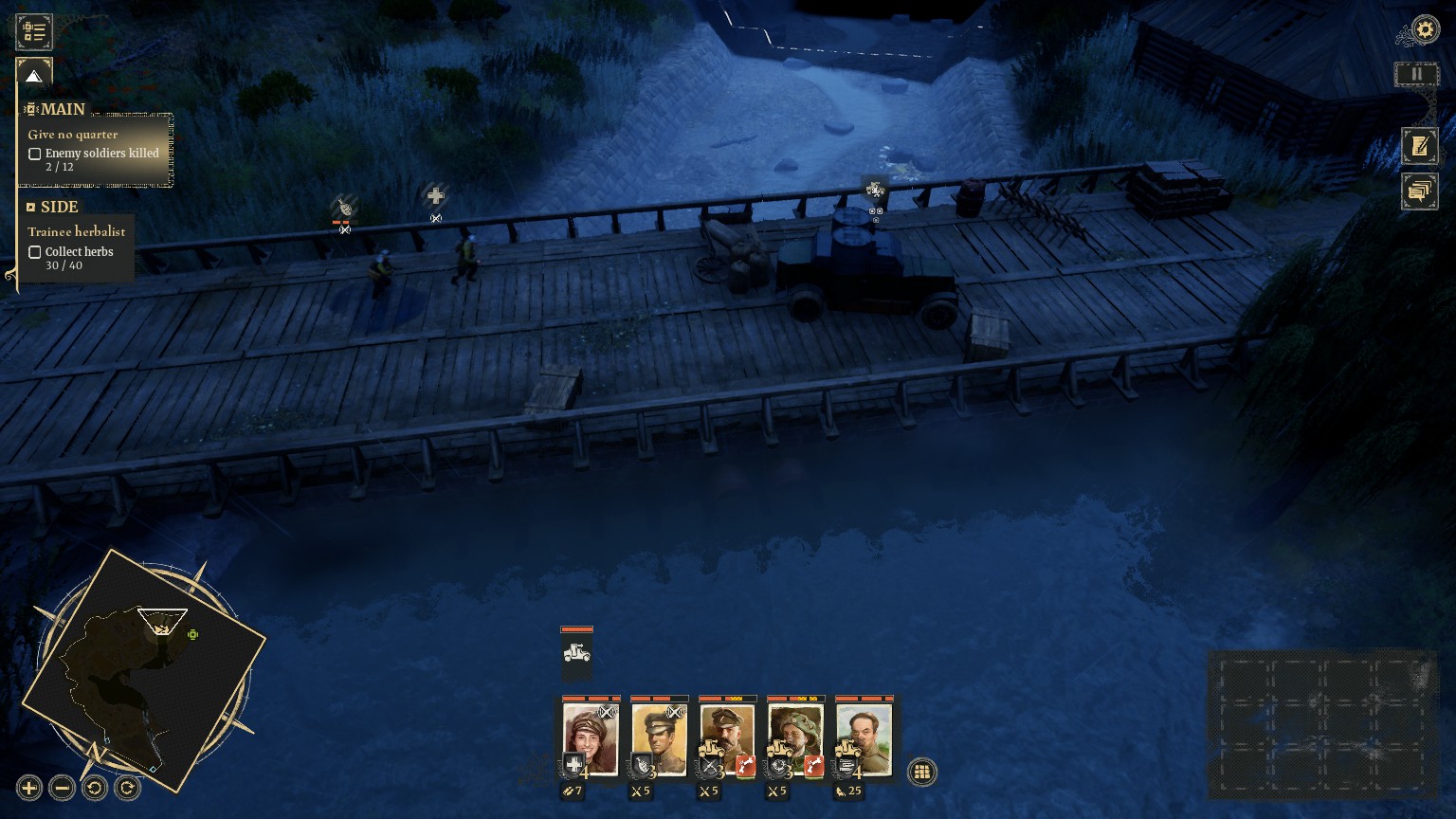
Make The Journey, Your Way
If all of what I’ve described so far feels daunting, well, it kind of should. Last Train Home is best enjoyed on its default settings, where your squad is up against almost every one of the elements. Resources will run low, hard decisions will have to be made and mistakes will be severely punished. Yet, it’s not unfair or overly brutal, it’s just a true recreation of the hardship faced by a military Legion in a foreign nation at war.
Thankfully, Ashborne Games included a suite of options to tinker the experience with. Want to focus more on the train management simulation and think less about the RTS combat? There’s an option for it. Want to have challenging combat missions but more resources to reduce the risk of failure? Move those sliders to your heart’s content.
While I personally prefer the higher stakes and risk of mission failure at every turn, other people may not. Last Train Home accounts for players of differing mindsets and skill levels accordingly, making it both more accessible and truly challenging for those who want it to be. The best of both worlds, ironically in a game where the world is utterly despondent and filled with dread.
At certain junctions, you’ll even get to choose which routes to take to continue your 9,000-kilometer journey. Either choice will result in the same end location, but the missions and threats you’ll face will vary. This provides some welcome replayability value and will keep the experience fresh for at least a couple of playthroughs, if not more.
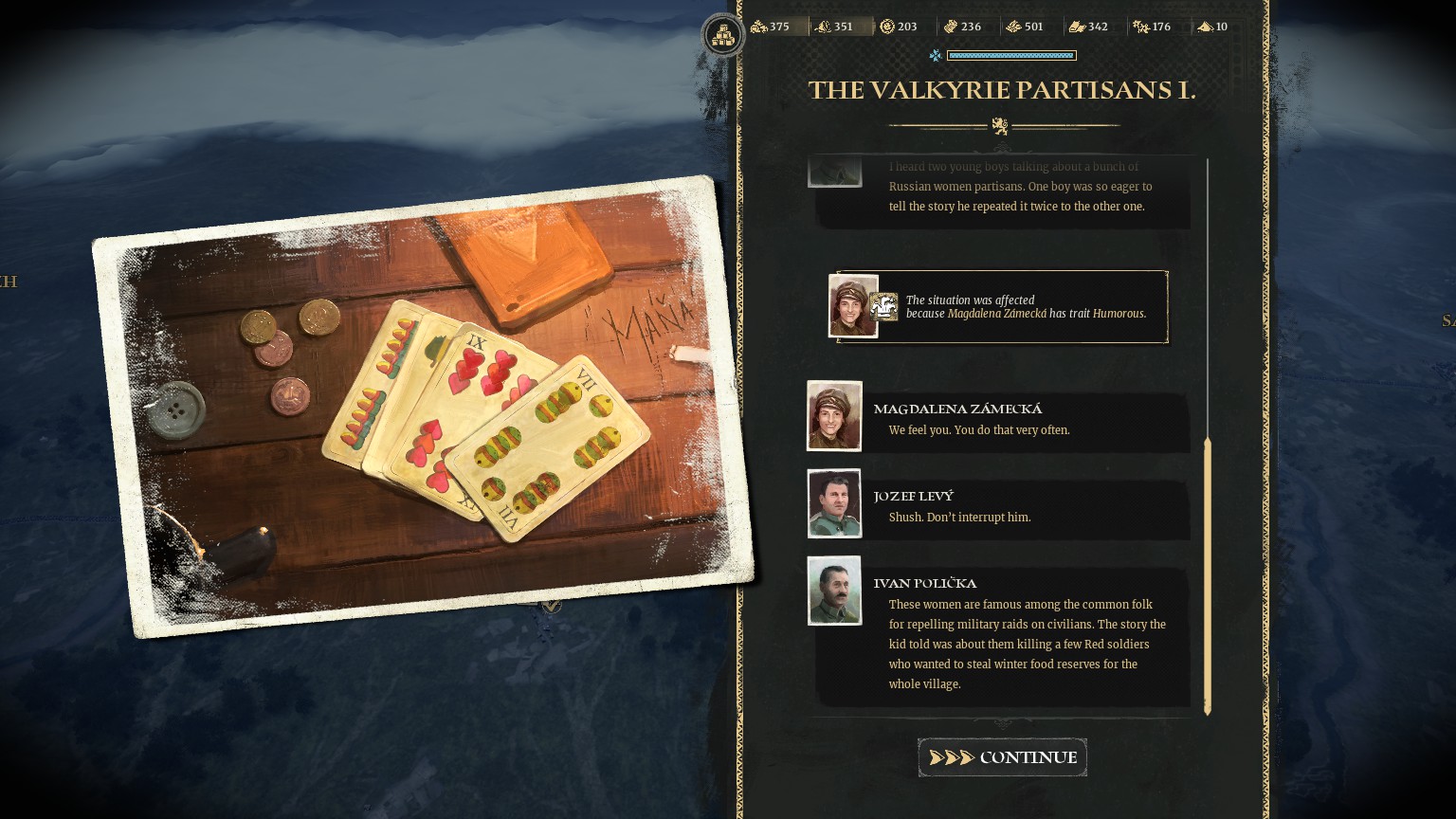
World War Won
I touched on the sense of atmosphere and the fantastic world-building of Last Train Home in both the preview and earlier in this review. However, it’s worth re-emphasising just how impeccably the game captures the experience of a land devastated by war. You’ll frequently visit towns plundered for resources, witness or reveal heinous war crimes and face the realities of a brutal world on the edge of destruction.
While my system had to manage things at medium settings owing to the weight it placed on the framerate, the maps and animations were still excellently rendered. Aside from the odd graphical bug and a crash to desktop on one occasion, things ran relatively well and the combat looks and sounds the part you’d expect. It’s punchy, heavy and full of bravado.
Quite honestly, I can’t recommend Last Train Home highly enough if you’re a management sim or RTS fan. Embarking on the 9,000-kilometer odyssey is a trying, desperate effort as you attempt to keep your Legion from harm. You want these soldiers to make it to their heralded home, only to suffer when the odds stack up against you.
You’ll make some tough choices, curse as the mistakes pile up and lament the opportunities you miss. But then you’ll feel the rush of a mission executed to perfection, a previous choice yielding a saving grace in a moment of crisis. Last Train Home is top of its class when it comes to an authentic, demanding RTS experience.
World War One was Hell, and leading your squad to salvation feels that much more rewarding as a result.
A title that succeeds in blending its story with the in-game narratives the player creates is a rarity and Last Train Home achieves it with aplomb. Some minor gameplay and visual stutters aside, this is a steamtrain built to withstand any hardship. Challenging combat missions, deep management gameplay and a phenomenal recreation of 1910s desolate Russia make this train worth boarding.

Last Train Home releases November 29th on PC (review platform).
Developer: Ashborn Games
Publisher: THQ Nordic
Disclaimer: In order to complete this review, we were provided with a promotional copy of the game. For our full review policy, please go here.
If you enjoyed this article or any more of our content, please consider our Patreon.
Make sure to follow Finger Guns on our social channels –Twitter, Facebook, Twitch, Spotify or Apple Podcasts – to keep up to date on our news, reviews and features.
